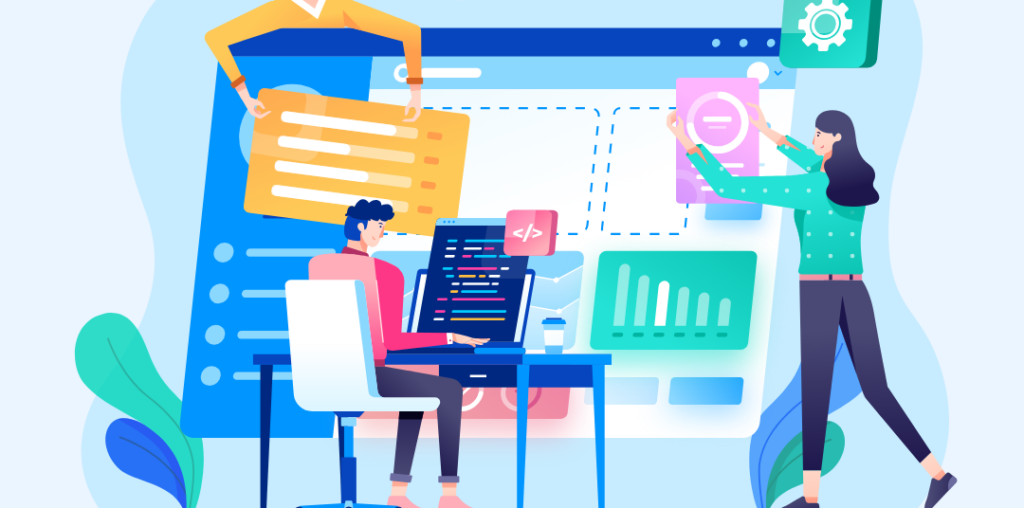The German manufacturing industry has always been at the forefront of innovation, driven by advanced engineering and technological expertise. As Industry 4.0 continues to reshape the sector, digital twins are emerging as a game-changer. These virtual replicas of physical assets, systems, and processes allow manufacturers to optimize performance, reduce downtime, and enhance efficiency. The role of software in digital twin technology is crucial, enabling real-time data integration, simulation, and predictive analytics.
This blog explores the impact of digital twins on German manufacturing, focusing on their benefits, challenges, and the role of software in their development.
What Are Digital Twins?
A digital twin is a real-time virtual model that mirrors a physical object, process, or system. It collects and analyzes data from sensors embedded in machinery, providing insights into performance, potential failures, and operational efficiency. This concept is revolutionizing industries such as aerospace, automotive, and logistics by enabling data-driven decision-making.
The core components of digital twins include:
- Physical Asset – The real-world object being modeled.
- Digital Replica – The virtual counterpart that updates continuously based on real-time data.
- Data Communication – Sensors and IoT devices that feed information into the model.
- Analytical Engine – AI-driven algorithms that process data and generate insights.
By simulating real-world conditions, digital twins help manufacturers predict maintenance needs, optimize production, and enhance overall efficiency.
The Rise of Digital Twins in German Manufacturing
Germany’s reputation as a global manufacturing leader makes it a prime adopter of digital twin technology. The automotive, machinery, and electronics sectors are leveraging these virtual models to drive innovation. Companies such as Siemens, Bosch, and BMW are integrating digital twins into their production processes to enhance quality and reduce costs.
Industry 4.0 and Digital Twins
The concept of Industry 4.0 revolves around automation, data exchange, and smart manufacturing. Digital twins fit seamlessly into this framework by enabling:
- Predictive Maintenance – Sensors collect data on machine performance, allowing manufacturers to detect faults before they lead to breakdowns.
- Process Optimization – Virtual models simulate different production scenarios, helping businesses identify the most efficient workflows.
- Supply Chain Resilience – Real-time monitoring of logistics and inventory ensures smooth operations with minimal disruptions.
With Germany’s strong emphasis on smart factories and digitalization, digital twins are becoming an integral part of its industrial landscape.
Software’s Role in Digital Twin Development
The success of digital twins depends on the software that powers them. Advanced algorithms, artificial intelligence, and cloud computing play a critical role in ensuring these virtual models function effectively.
Key Software Technologies Enabling Digital Twins
- IoT Integration
Sensors and IoT devices collect and transmit real-time data to the digital twin. Software solutions process this information, ensuring seamless connectivity between physical and virtual models. - AI and Machine Learning
Predictive analytics tools use AI to analyze large datasets, identifying patterns and potential failures. This allows manufacturers to implement proactive maintenance strategies. - Simulation Software
High-performance simulation tools such as Siemens NX and Dassault Systèmes’ 3DEXPERIENCE allow engineers to test different scenarios without disrupting physical production lines. - Cloud Computing
Cloud-based platforms provide scalable storage and computing power, enabling real-time access to digital twin data across multiple locations. - Cybersecurity Measures
As digital twins rely on extensive data exchange, robust security protocols are essential. Encryption, multi-factor authentication, and secure access controls protect sensitive manufacturing data.
The collaboration between hardware and software ensures that digital twins provide accurate, actionable insights that enhance manufacturing efficiency.
Benefits of Digital Twins in Manufacturing
Digital twin technology offers a wide range of benefits that are transforming Germany’s manufacturing sector.
Enhanced Predictive Maintenance
By analyzing real-time data, manufacturers can anticipate equipment failures and schedule maintenance proactively. This reduces downtime and extends the lifespan of machinery.
Optimized Production Efficiency
Digital twins simulate different production processes, helping businesses identify inefficiencies and improve workflows. This leads to increased output and reduced waste.
Improved Product Design
Engineers can test and refine new designs in a virtual environment before physical production begins. This minimizes errors and accelerates time-to-market for new products.
Cost Reduction
By preventing unexpected breakdowns and optimizing resource utilization, digital twins help manufacturers cut operational costs.
Sustainable Manufacturing
Germany’s focus on sustainability aligns well with digital twin technology. By optimizing energy consumption and reducing material waste, manufacturers can lower their environmental impact.
Challenges in Implementing Digital Twins
Despite their numerous advantages, digital twins also present challenges that manufacturers must overcome.
High Initial Investment
Implementing digital twin technology requires substantial investments in IoT infrastructure, software development, and skilled personnel. Small and medium-sized enterprises (SMEs) may find these costs prohibitive.
Data Integration Issues
Manufacturers often struggle with integrating data from multiple sources into a unified digital twin platform. Compatibility between legacy systems and modern software solutions remains a major hurdle.
Cybersecurity Risks
As digital twins rely on vast amounts of data, they become attractive targets for cyber threats. Ensuring strong security measures is critical to prevent unauthorized access and data breaches.
Complexity of Implementation
Developing and maintaining digital twins requires expertise in AI, machine learning, and cloud computing. Many manufacturers face difficulties in finding skilled professionals who can manage these systems effectively.
The Future of Digital Twins in German Manufacturing
As technology continues to evolve, digital twins are expected to become even more sophisticated. Advancements in artificial intelligence, quantum computing, and blockchain will further enhance their capabilities.
AI-Driven Automation
Future digital twins will leverage AI to make autonomous decisions, further reducing human intervention in manufacturing processes.
Blockchain for Data Security
The integration of blockchain technology will enhance data security, ensuring that digital twin models remain tamper-proof and trustworthy.
Extended Reality (XR) Applications
Augmented reality (AR) and virtual reality (VR) will enhance the visualization of digital twins, allowing engineers to interact with virtual models in immersive environments.
Scalability for SMEs
As digital twin solutions become more accessible and cost-effective, smaller manufacturers will be able to adopt them, driving widespread digital transformation across the industry.
Conclusion
Digital twins are revolutionizing German manufacturing by enabling predictive maintenance, optimizing production efficiency, and improving product design. The integration of advanced software technologies such as AI, IoT, and cloud computing is crucial in making these virtual models functional and effective. However, challenges such as high implementation costs, cybersecurity threats, and data integration issues must be addressed to maximize their potential.
As the industry continues to evolve, businesses looking to implement digital twin solutions can benefit from partnering with a software development company in Berlin that specializes in industrial digitalization. With ongoing advancements, digital twins will play a crucial role in shaping the future of Germany’s manufacturing sector.

